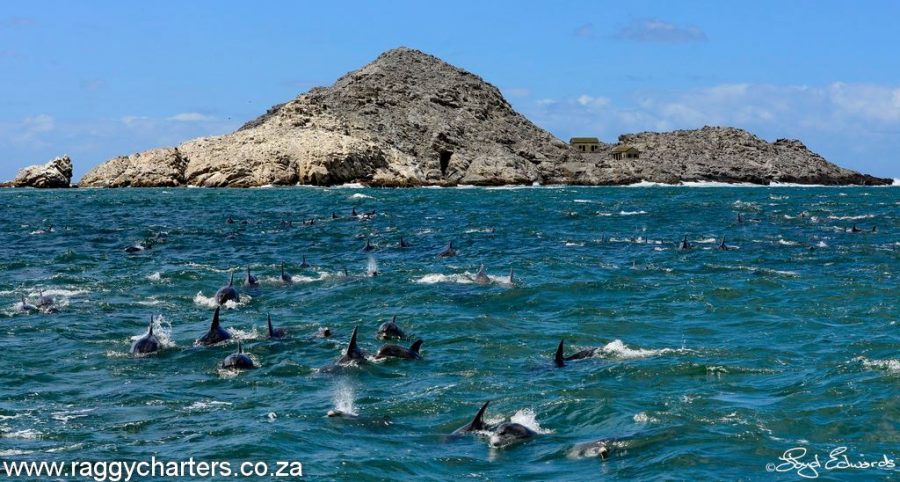
Heartbreaking Photo of Dolphin Cow in South Africa’s Algoa Bay
A heartbreaking photo of a bottlenose dolphin mother was captured in South Africa this weekend. Amongst a school of around 600 Indo-Pacific dolphins, the cow can be seen carrying her dead baby, reluctant to let it go… It’s a phenomenon known to marine scientists. Raggy Charters’ Lloyd Edwards, who took the tragic photo, said it […]

A heartbreaking photo of a bottlenose dolphin mother was captured in South Africa this weekend. Amongst a school of around 600 Indo-Pacific dolphins, the cow can be seen carrying her dead baby, reluctant to let it go…

It’s a phenomenon known to marine scientists.
Raggy Charters’ Lloyd Edwards, who took the tragic photo, said it was his first sighting in 30 years of this sad phenomenon (although he adds that he may have seen it before without realising).
During one of the company’s marine eco cruises off St Croix Island in Algoa Bay (Eastern Cape), they had encountered the school of dolphins.

“It was amazing… until we saw one of them pushing something on its rostrum / beak / forehead.
“I managed to get a photo (not great) but it turned out to be a dead calf. This is known as epimeletic care or attention-giving behaviour.
“It is very sad to see, as the mother may carry it around for a few weeks. She is either mourning her loss… or helping it to stay afloat in the hope that it revives itself.
“Some animals have been known to carry a rotting carcass around, so it is more likely mourning.” Scientists have not yet discovered exactly what is going on in the mother’s brain during this period.
Lloyd says: “It looks like a very young calf, possibly newborn due to the lack of skin, although the body is still intact.
“This behaviour has been documented in captive and free-ranging dolphins. It is more evident in calves that have been suckling for two or more years.”
Recently, international headlines were made when a killer whale was spotted pushing its calf in a similar way off the West Coast of Canada and the US, says Lloyd.
Lloyd consulted with four marine biologists before writing his post, which can be read in full here.
